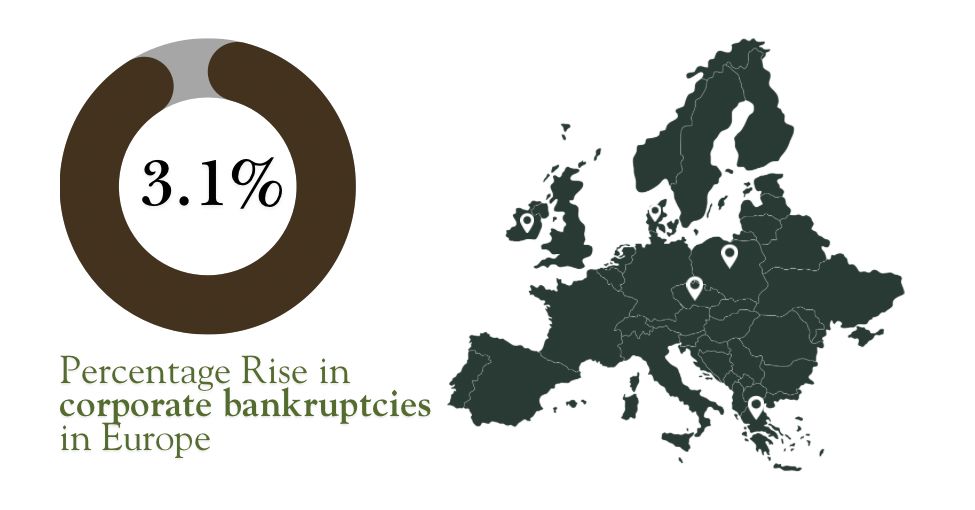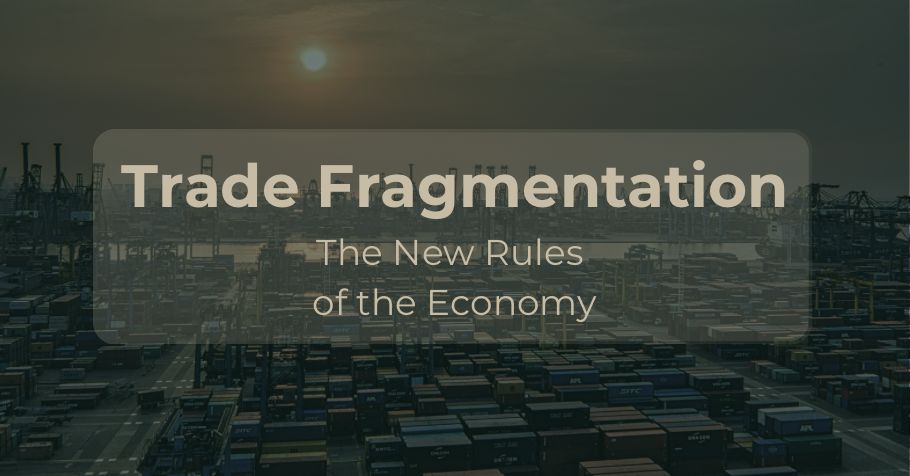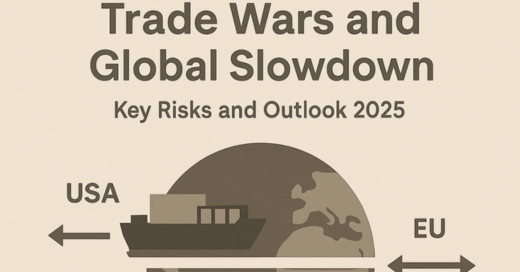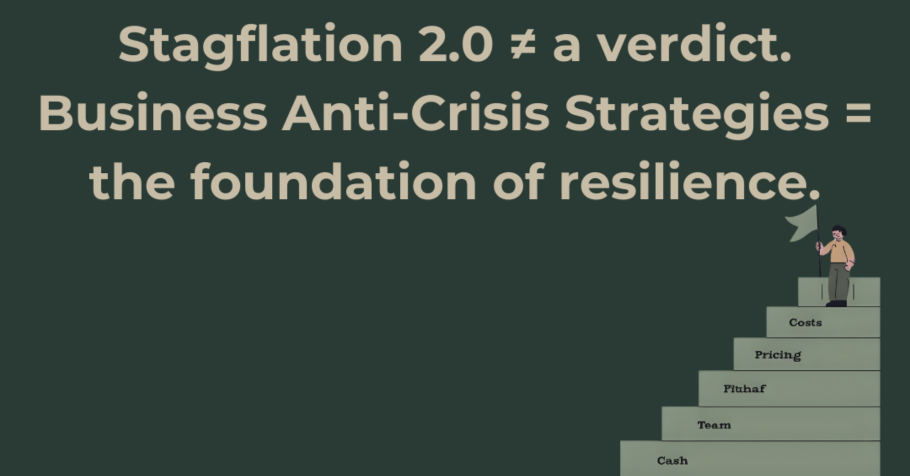European businesses encountered significant risks in 2024, as economic uncertainty and geopolitical instability disrupted markets. These challenges affected operations, with rising bankruptcies, the increasing presence of “zombie” companies, increasing labour costs, and a decline in new business formation. In this article, we will explore these risks and their implications for companies operating across Europe.
1. Rising Corporate Bankruptcies
Corporate bankruptcies in Europe increased by 3.1% in the third quarter of 2024 compared to the previous quarter. Small and medium-sized enterprises, in particular, were vulnerable to disruptions such as rising energy prices, high interest rates, and decreased consumer demand. As businesses struggled with these challenges, bankruptcy rates continued to climb.
Corporate bankruptcies had a wider impact on the economy. When businesses went bankrupt, jobs were lost, and unemployment rose. This created a vicious cycle, hindering recovery and reducing competition. Companies had to be proactive in managing finances to avoid bankruptcy, which could significantly affect their stability.
2. The Growing Problem of “Zombie” Companies
“Zombie” companies, sustained by government subsidies during the pandemic, became more common. While these businesses survived in the short term, their long-term viability was uncertain. As government support decreased, many struggled to remain profitable.
These companies were often unproductive and financially unstable. The longer they stayed in business, the more they dragged down the overall market. These “zombie” companies absorbed resources that could have been used more effectively elsewhere. They also accumulated significant debt, destabilizing the economy.
Focusing on healthier businesses helped reduce the negative impact of “zombie” companies and promoted more dynamic economic growth.
3. Rising Labour Costs
Labour costs in Europe rose by 5.5% in the first quarter of 2024, increasing pressure on businesses. The increase in wages and social security contributions made it harder for companies to remain competitive.
Rising labour costs forced businesses to either increase prices, which could reduce demand, or find ways to improve efficiency. Some companies chose to lay off employees or outsource operations. Those with tight margins or operating in already struggling industries were hit the hardest.
To cope with rising costs, businesses had to find innovative ways to reduce expenses, increase productivity, and stay competitive in a globalized market.
4. Declining Number of New Companies
The number of new businesses in Europe declined in 2024. New business registrations in the EU fell by 2.1% in the first quarter, highlighting the difficulties entrepreneurs faced. Rising costs, high taxes, and economic instability made it harder for new businesses to launch and succeed.
The decline in new businesses posed a long-term challenge for the European economy. Startups and small businesses were key drivers of innovation, job creation, and growth. Fewer new businesses meant stifled competition and slowed economic progress. As fewer entrepreneurs entered the market, the economy became more reliant on established companies, which were often less flexible.
Governments and businesses needed to support new companies through lower taxes, financial incentives, and greater access to investment. Creating a more supportive environment for startups could help mitigate the challenges facing the economy.
Conclusion: Navigating Risks in 2024
In conclusion, 2024 presented a challenging environment for European businesses, marked by rising risks. Corporate bankruptcies, the rise of “zombie” companies, increasing labour costs, and the decline in new business formation all contributed to an uncertain economic landscape. To succeed, companies had to focus on managing these challenges effectively.
Innovation, cost efficiency, and flexibility were key to surviving and thriving in this difficult environment. By actively addressing these risks and finding ways to manage them, businesses could maintain their competitiveness and sustainability in the long run. Ultimately, overcoming these challenges required collaboration between companies, governments, and financial institutions.





